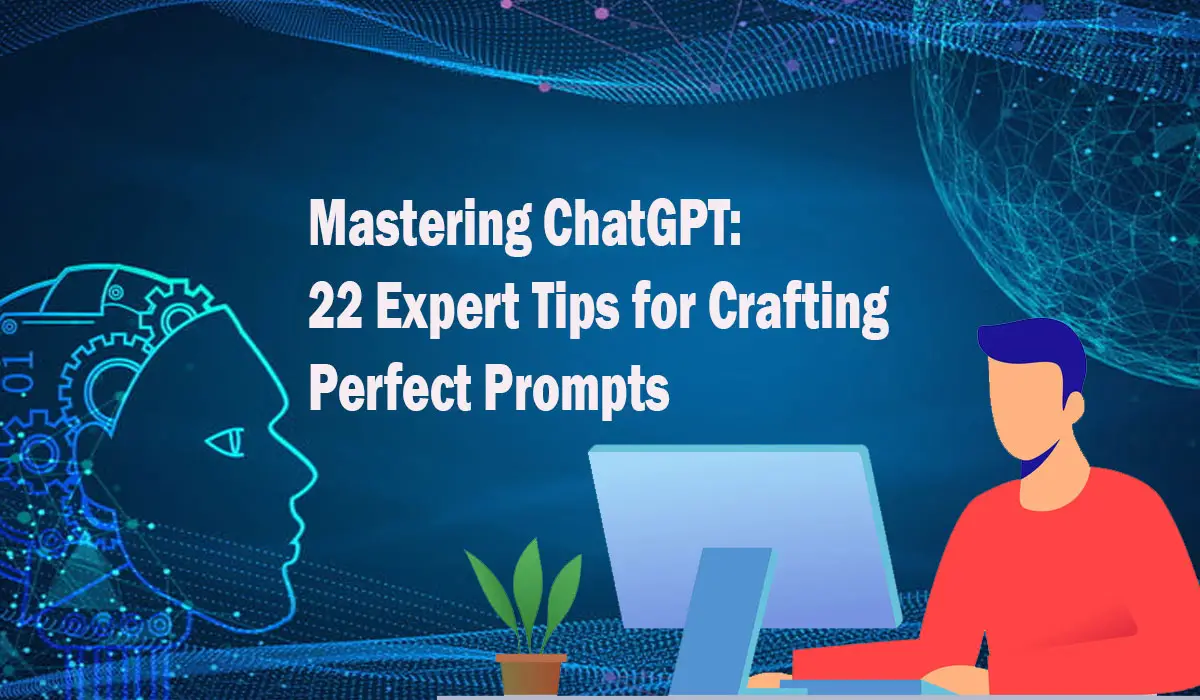ChatGPT has brought the capabilities of AI writing to the forefront of creativity and innovation. While the technology itself is impressive, the key to harnessing its full potential lies in crafting effective prompts. Well-structured prompts provide the necessary context and guidance for ChatGPT to generate responses that meet your specific requirements. This comprehensive guide unveils 22 proven tips to help you master the art of creating prompts that yield optimal results. Discover how to structure your prompts, define tone and format, optimize for accuracy, and navigate around the limitations of AI. By incorporating these techniques, you’ll unlock captivating, high-quality content tailored to your individual needs.
Introduction
The introductory section lays the foundation for understanding the significance of crafting well-designed prompts. It explores the symbiotic relationship between the input provided and the quality of the AI-generated output. Establishing this connection is crucial for effective communication between you and ChatGPT.
Structuring Prompts Clearly
Begin with a Clear Objective: Define the purpose of your prompt upfront. Clearly articulate what you want the AI to help you achieve.
Break Down Complex Ideas: If your topic is complex, break it down into smaller sub-topics. This helps ChatGPT focus on generating specific and accurate responses.
Specify Desired Tone
Choose the Right Tone: Specify the tone you want the AI to adopt. Whether it’s formal, informal, professional, or casual, providing this information sets the appropriate context.
Define Format
Select Format: Decide on the format of the response you expect. Do you need a short paragraph, a list, a detailed explanation, or even a creative piece? Clearly communicate your formatting preference.
Set Role or Perspective
Establish Perspective: Inform ChatGPT about the role or perspective you’d like the response to embody. This ensures that the generated content aligns with the desired viewpoint.
State Purpose
Explain the Why: Communicate why you’re seeking this information. This context helps the AI understand the purpose behind your request, resulting in more relevant responses.
Specifying Response Details
The following section delves into the specific details you should provide to the AI to guide its responses effectively.
List Keywords
Use Relevant Keywords: Incorporate keywords related to your topic. These keywords serve as cues for the AI to generate content that aligns with your subject matter.
Set Length Limits
Set Response Length: Define the desired length of the response. Whether it’s a brief snippet or an in-depth explanation, specifying the length avoids unnecessary verbosity.
Give Examples
Provide Examples: Offer examples related to your topic. This helps ChatGPT understand the context and structure you’re looking for in the response.
Mention Deadlines
Indicate Time Sensitivity: If your prompt is time-sensitive, communicate the deadline. This ensures that the AI-generated content considers the urgency of your request.
Optimizing for Accuracy
In this section, we explore strategies to enhance the accuracy of AI-generated responses.
Specify Audience
Define Target Audience: Clarify the intended audience for the response. This helps ChatGPT tailor its content to match the level of understanding and context required.
Set Language
Specify Language Style: Define the preferred language style—whether it’s technical, layman’s terms, or a specific jargon. This guides the AI’s language choices.
Request Sources
Ask for References: If you need well-researched content, ask ChatGPT to provide references or cite reputable sources to support its responses.
Seek Multiple Perspectives
Explore Different Angles: If your topic has multiple perspectives, request the AI to explore and present various viewpoints for a comprehensive response.
Ask for Counterarguments
Encourage Critical Thinking: Prompt the AI to include potential counterarguments or challenges related to the topic. This adds depth and authenticity to the generated content.
Avoiding AI Limitations
This section delves into potential pitfalls and how to avoid them while crafting prompts.
Overly Broad Topics
Avoid Ambiguity: Refrain from overly broad prompts. The AI performs best when it has clear instructions and a specific focus.
Ambiguous Language
Be Clear and Concise: Avoid vague or ambiguous language. Opt for precise wording to ensure the generated content aligns with your expectations.
Subjective Questions
Steer Clear of Subjectivity: If you want factual responses, frame your prompts to avoid subjective interpretation.
Overly Colloquial Language
Maintain Professionalism: While an informal tone is fine, avoid excessive colloquialisms. This maintains the credibility and professionalism of the generated content.
Controversial Content
Handle Controversy with Care: If your topic is controversial, provide guidelines on how you want the AI to address sensitive subjects.
Circular Conversations
Avoid Repetition: Craft prompts that prevent the AI from entering circular conversations or continuously generating similar responses.
Conclusion
In conclusion, mastering the art of creating prompts for ChatGPT is an invaluable skill. By adhering to these 22 tips, you’ll be equipped to craft prompts that yield accurate, contextually appropriate, and engaging AI-generated content. As you experiment and refine your prompt-writing skills, you’ll unlock the full potential of AI-powered creativity.
FAQs
How long should my prompts be?
- Prompt length can vary based on complexity. Be concise, but provide enough context for clarity.
Can I include images in prompts?
- Currently, ChatGPT processes text-only prompts. Images aren’t recognized as inputs.
How much background context is needed in prompts?
- Include enough context for the AI to understand, but avoid overwhelming it with unnecessary details.
Can I prompt ChatGPT in other languages?
- As of now, ChatGPT primarily supports English prompts.
Does prompt sequence matter for accuracy?
- Yes, the order of your prompts can impact the AI’s responses. Experiment to find the most effective sequence.

